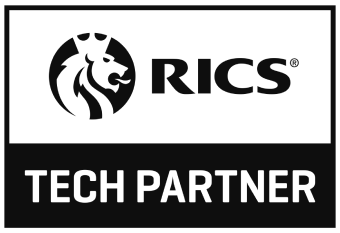
The Architectural Journey of Football Stadiums
Football stadiums are more than just venues for sports; they are architectural marvels that shape and define the urban landscape. These iconic structures bring life to cities in ways nothing else can, buzzing with energy and excitement whenever a game is on.
However, their impact extends far beyond the pitch. They influence city aesthetics, contribute to economic development, and reflect the cultural identity of their locales. This piece explores the architectural journey of football stadiums in the UK, focussing on Manchester and Liverpool, while examining how these developments are integrated into the urban fabric. We'll also touch on the upcoming Euro 2028 and its role in accelerating these transformations.
Manchester's Football Icons: Old Trafford and Etihad Stadium
Manchester, home to two of the most famous football clubs in the world, has seen significant architectural developments around its football stadiums. Old Trafford, the home of Manchester United, is a historical monument in its own right. Its iconic red brick facade and towering stands have become a symbol of the club's rich heritage. Over the years, expansions and modernisations have ensured that Old Trafford remains a state-of-the-art facility, blending the old with the new.
In contrast, the Etihad Stadium, home of Manchester City, represents modern architectural innovation. Originally built for the 2002 Commonwealth Games, it was later converted into a football stadium. The Etihad boasts a sleek, futuristic design with its iconic blue seats and extensive use of glass and steel, which seamlessly integrates into the surrounding urban landscape. Future developments include expanding the north stand, adding more seating, and enhancing fan facilities, which will further cement its place as a cutting-edge venue.
We used our Consented Timeline Tool to visualise the developments to the Etihad Stadium, watch the video below to get a glimpse into the future.
Liverpool's Football Heritage: Anfield and Everton Stadium's Dual Development
Liverpool is another city where football stadiums play a crucial role in shaping the urban environment. Anfield, the historic home of Liverpool FC, is renowned for its passionate atmosphere. Recent expansions have not only increased its capacity but also revitalised the surrounding area. The new main stand is a striking addition, with its towering presence and modern amenities, blending traditional elements with contemporary design.
Meanwhile, the new Everton Stadium at Bramley-Moore Dock represents a bold step forward in urban regeneration. Situated close to the River Mersey, the stadium's design draws inspiration from the city's maritime heritage. Its construction is part of a broader effort to revitalise the docklands area, creating new opportunities for businesses and residents. The proximity of Everton Stadium to Anfield highlights a unique urban phenomenon—two major stadiums within close quarters, driving growth and competition in the city's north end.
Watch the video below to see a visual timeline showing the development of Everton Stadium, its impact on the nearby Anfield area, and its proximity to other stadiums, emphasising the dual transformation of Liverpool’s cityscape.
Architectural Innovation and Urban Integration
The design of modern football stadiums goes beyond aesthetics; it focuses on sustainability, community engagement, and urban integration. Architects and planners face the challenge of creating structures that not only provide an exceptional match-day experience but also serve the community throughout the year. Features like multi-purpose spaces, commercial areas, and public amenities ensure that stadiums remain active hubs even on non-match days.
Sustainability is another key consideration. Many new stadiums incorporate green technologies, such as solar panels, rainwater harvesting, and energy-efficient lighting. These initiatives not only reduce the environmental footprint but also contribute to the long-term economic viability of the stadiums.
The Role of Digital Tools in Stadium Development
The integration of advanced digital tools is revolutionising the design and construction of football stadiums. Generative design, 3D modelling, and digital twins are at the forefront of this transformation. Generative design uses algorithms to explore a vast array of design possibilities, optimising for factors like sustainability and cost-efficiency. 3D modelling provides detailed visualisations of the stadiums, allowing architects and stakeholders to refine designs with precision. Digital twins—virtual replicas of physical structures—enable continuous monitoring and management of stadium operations, ensuring optimal performance and maintenance. These technologies not only streamline the construction process but also enhance the long-term functionality and adaptability of the stadiums, making them smarter and more resilient urban landmarks.
Check out some of our stadiums in the VU.CITY platform below:




Euro 2028: What's the Score?
Hosting the Euro 2028 tournament in the UK is a significant factor driving the current wave of stadium developments and expansions. As cities prepare to welcome football fans from across Europe, the need for modern, high-capacity venues has become paramount. The tournament is acting as a catalyst for urban regeneration projects, ensuring that infrastructure is upgraded, transport links are improved, and cities are ready to showcase their best to the world.
The impact of Euro 2028 will be felt long after the final whistle. The legacy of enhanced facilities, improved public spaces, and increased tourism will contribute to the ongoing growth and development of host cities, reinforcing the vital role that football stadiums play in urban landscapes.
Conclusion
When it comes to football stadiums, there's more to them than meets the eye. They are architectural landmarks that define and transform the urban fabric. The ongoing developments in Manchester and Liverpool are prime examples of how these structures blend history with innovation, contributing to the economic and cultural vibrancy of their cities. As we look forward to Euro 2028, it's clear that these iconic stadiums will continue to play a pivotal role in shaping the future of urban development in the UK.
In essence, these stadiums are not just places to watch sports but key players in how our cities look and feel. They tell a story of growth, change, and how sports can help cities evolve. So, next time you visit a football stadium, take a moment to appreciate its architecture and its broader impact on the cityscape—it’s a testament to the dynamic relationship between sports and urban development.
More Articles
Discover more of our recent articles below
VU.CITY becomes a Certified B Corporation
LONDON, March 26, 2025 — VU.CITY has today announced its certification as a B Corporation (or B
Overcoming Communication Barriers in Planning with 3D Flythroughs
The Planning Communication Challenge Navigating the planning process can be a minefield of
Bring Your Vision to Life with VU.CITY’s Flythrough Animation Service
In an era where first impressions count, effectively showcasing your project’s potential can make
Rebuilding Trust in Urban Planning: How Shared 3D Models Are Ending the Era of Subjectivity
Urban planning, often seen as a balancing act between progress and preservation, is grappling with
VU.CITY Joins Crown Commercial Service G-Cloud 14 Digital Framework
We’re thrilled to announce that VU.CITY, the leading platform for 3D urban modelling, is now part
AI Guide for Architects AI Tools for Architects: Enhancing Design and Operations
Discover the future of architectural planning in Bristol with our eBook. Explore how innovative technologies are reshaping the city's skyline. Download now to uncover the cutting-edge solutions employed by Bristol architects.
Join the Community
Updates, business insights, webinars and more.
Google Privacy Policy and Terms of Service apply.

















